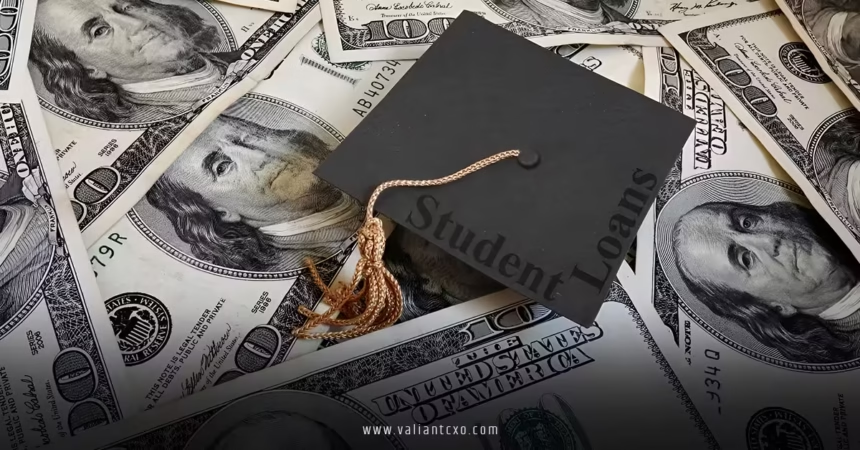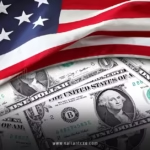How to check if you’re eligible for 2025 IBR student loan forgiveness under Trump administration—that’s the million-dollar question buzzing in the minds of millions of borrowers right now, isn’t it? Picture this: You’ve been chipping away at those pesky student loans for years, feeling like you’re running a marathon with no finish line in sight. Suddenly, whispers of policy shifts under the new administration spark hope. But hold up—eligibility isn’t a free-for-all. It’s a puzzle with specific pieces, and I’m here to help you snap them together. In this deep dive, we’ll unpack the Income-Based Repayment (IBR) plan, spotlight the fresh twists from 2025’s big legislative shake-up, and walk you through the nitty-gritty steps to figure out if that sweet forgiveness is within your grasp. Buckle up; by the end, you’ll feel empowered, not overwhelmed.
Understanding the IBR Plan: Your Ticket to Affordable Repayments
Let’s kick things off with the basics because, let’s face it, student loan jargon can feel like deciphering ancient hieroglyphs. The IBR plan isn’t some elusive myth—it’s a federal lifeline designed for folks whose salaries haven’t caught up to their debt loads. Under IBR, your monthly payments cap at a percentage of your discretionary income, typically 10% to 15%, depending on when you borrowed the cash. It’s like having a financial safety net that adjusts as your paycheck does, preventing those “eat ramen or default” dilemmas.
But why does this matter for forgiveness? IBR isn’t just about lighter payments today; it’s a bridge to wiping the slate clean tomorrow. Imagine your loans as a stubborn weed in your garden—you keep trimming it back, and after two decades of consistent effort, poof, it’s gone for good. That’s the promise here. And with the Trump administration’s recent moves, that bridge might just got a sturdy upgrade. If you’re wondering how to check if you’re eligible for 2025 IBR student loan forgiveness under Trump administration, knowing these foundations is your first port of call.
What Exactly is IBR, and Who Qualifies at a Glance?
Diving deeper, IBR stands for Income-Based Repayment, a program launched back in 2009 to make federal student loans less of a chokehold for lower- to middle-income earners. To hop on board, your payments need to be lower under IBR than a standard 10-year plan—think of it as the government’s way of saying, “Hey, we get it; life isn’t always a straight-A salary right out of college.”
Qualification hinges on two biggies: your income and family size. No more outdated tax returns dictating your fate; annual recertification keeps it current. New grads or career switchers love this flexibility—it’s like a pair of jeans that actually fits your changing body. But here’s the kicker: Not all loans play nice. Only federal Direct Loans or consolidated FFEL loans count. Private loans? They’re spectators on the sidelines, watching enviously.
As of 2025, the Trump administration’s tweaks have broadened the welcome mat. Gone is the old partial financial hardship rule that used to gatekeep entry. Now, more borrowers can slide in without proving they’re scraping by. If that sounds like you, stick around—we’re about to get tactical.
Forgiveness Timeline: 20 or 25 Years of Payments?
Ah, the golden horizon: forgiveness after a set number of qualifying payments. For loans disbursed before July 1, 2014, it’s 25 years. Post that date? Sweeten the deal to 20 years. Each on-time, full payment under IBR counts toward your tally, like stacking bricks in a wall that’s finally going to topple your debt.
But wait—qualifying payments include more than just cash sent to your servicer. Deferments, forbearances, and even those pandemic pauses from 2020-2023 retroactively boost your count. It’s as if Uncle Sam hit the fast-forward button on your progress. Under the 2025 landscape, with processing hiccups now resolved, thousands are crossing that finish line monthly. Exciting times, right? Yet, how to check if you’re eligible for 2025 IBR student loan forgiveness under Trump administration boils down to verifying those months haven’t slipped through the cracks.
The Trump Administration’s Impact on Student Loans in 2025: A Game-Changer?
Fast-forward to 2025: Donald Trump’s back in the White House, and student loans are getting a makeover courtesy of the One Big Beautiful Bill Act (OBBBA), signed into law this July. It’s not all sunshine—some plans are sunsetting—but for IBR loyalists, it’s mostly good news. Think of it as a renovation: The house (your repayment options) gets streamlined, but your cozy IBR corner stays intact, at least for now.
The administration’s vibe? Efficiency over expansion. They’ve paused and resumed forgiveness waves to iron out kinks, ensuring counts are spot-on before greenlighting discharges. Over the summer, a temporary halt left borrowers in limbo, but as of early October, the spigot’s flowing again. Mass emails are flying out, notifying folks who’ve hit their payment milestones. If you’re one of the estimated 2 million in the queue, this could mean checks clearing sooner than you think.
Key Changes from the One Big Beautiful Bill Act
OBBBA isn’t messing around—it’s a sweeping overhaul hitting everything from repayment caps to forgiveness thresholds. For IBR specifically, the partial financial hardship barrier? Demolished. Now, any federal borrower can enroll, payments recalibrated to 10% of discretionary income across the board, with that 20/25-year forgiveness clock ticking reliably.
But here’s the curveball: Starting July 1, 2026, new loans won’t qualify for IBR, PAYE, or ICR. Instead, a shiny Repayment Assistance Plan (RAP) takes the stage, with payments from 1-10% of income but a dragged-out 30-year forgiveness window. Existing borrowers like you? You’re grandfathered in, so breathe easy. It’s like inheriting a plot of land before the zoning laws tighten.
Rhetorical nudge: Ever feel like policy changes are a rollercoaster? This one’s dipping but not derailing your IBR ride. To navigate it, mastering how to check if you’re eligible for 2025 IBR student loan forgiveness under Trump administration is your seatbelt.
Resumption of IBR Forgiveness Processing: What It Means for You
Remember that summer pause? It was all about system upgrades to nail payment counts accurately—no more forgiving debt based on fuzzy math. Now, with the green light from the Department of Education, servicers are churning through applications. If you’ve been on IBR for 20+ years, expect an email soon; discharges are hitting accounts weekly.
This resumption ties directly into Trump’s efficiency push—fewer errors, faster relief. But don’t pop the champagne yet; eligibility checks are crucial to avoid denials. It’s akin to prepping for a job interview: You wouldn’t wing it, so why chance your financial future?
How to Check If You’re Eligible for 2025 IBR Student Loan Forgiveness Under Trump Administration: Step-by-Step Guide
Alright, let’s roll up our sleeves—this is the meaty part where theory meets action. Wondering how to check if you’re eligible for 2025 IBR student loan forgiveness under Trump administration? It’s simpler than untangling Christmas lights, but it demands precision. We’ll break it into digestible steps, complete with pro tips to sidestep snags. Grab your laptop; we’re logging in.
Step 1: Log Into Your Federal Student Aid Account
First things first: Head to the official Federal Student Aid website and create or access your account. If you’ve got a FSA ID (that username-password combo), you’re golden. No ID? It takes five minutes—think of it as your VIP pass to loan intel.
Once inside, navigate to the dashboard. Your loans pop up like a family reunion photo: balances, servicers, repayment plans. Spot IBR? Great. If not, no sweat—enrollment’s a click away, especially post-OBBBA’s eased rules. This portal’s your command center for everything from payment histories to forgiveness trackers. Pro analogy: It’s like Google Maps for your debt journey; without it, you’re driving blind.
Step 2: Review Your Payment History and Qualifying Months
Now, the detective work: Scroll to your loan details and hunt for the “Payment Count” section. Under IBR, the magic number is 240 months (20 years) or 300 (25 years), but count only qualifying ones—on-time, income-based payments, plus eligible pauses.
Trump-era updates mean retroactive credits from COVID forbearances are now baked in automatically. If discrepancies glare (like missing months from servicer glitches), dispute them here. It’s like auditing your own bank statement; one overlooked entry could delay your discharge by months. Aim for transparency—download reports for your records.
Have you tallied yours lately? If not, pause reading and do it now. That “eligible” status might be closer than you think.
Step 3: Assess Your Income and Family Size for Ongoing IBR Fit
Eligibility isn’t static; it’s a living, breathing check tied to your finances. Recertify annually via your servicer or the FSA portal—input AGI from your tax return, plus household size. Discretionary income? That’s AGI minus 150% of the poverty line for your family.
Calculating Discretionary Income: A Quick Math Primer
Don’t fear the numbers; it’s straightforward. Say your AGI is $50,000, family of four in 2025—poverty guideline’s about $31,200, so 150% is $46,800. Discretionary: $50K – $46.8K = $3,200. At 10%, that’s $27 monthly payments. Tools on StudentAid.gov crunch this for you, spitting out scenarios like a crystal ball.
Under Trump, no hardship proof needed, so even if payments zero out (yes, possible!), they count toward forgiveness. It’s empowering—your low-earning seasons aren’t wasted time; they’re investments in freedom.
Step 4: Consider Loan Types and Disbursement Dates
Not all loans are created equal. FFEL loans must consolidate into Direct first—easy peasy via the portal. Check disbursement dates: Pre-2014? 25 years. After? 20. And post-July 2026 newbies? They miss IBR, but if you’re reading this, odds are you’re in the clear.
Cross-reference with your servicer (like Nelnet or MOHELA) for confirms. If overseas or in default, special rules apply—rehab or consolidation revives eligibility. Think of this as inventorying your toolbox; the right pieces ensure your forgiveness hammer lands true.

Common Pitfalls When Checking Eligibility: Avoid These Traps
Even pros trip up, so let’s spotlight the banana peels. First: Forgetting recertification. Miss it, and payments balloon to standard rates—kiss qualifying months goodbye. Set calendar reminders; it’s like watering a plant you want to bloom.
Second: Servicer silos. Counts vary by lender—always verify via FSA for the official tally. Third: Overlooking consolidations. Merging loans resets clocks sometimes; plan accordingly.
And under 2025’s flux? Don’t bank on unconfirmed rumors. Stick to ED.gov announcements for the real deal. These slips can sting, but awareness turns them into stepping stones.
What If You’re Not Eligible? Alternative Options Under Trump
Bummer if IBR’s not your jam—maybe wrong loan type or timeline. Enter alternatives: The new RAP plan, with its 30-year horizon, or standard plans for aggressive payoff. Public Service Loan Forgiveness (PSLF) if you’re in nonprofit trenches—10 years, baby.
Trump’s overhaul phases out SAVE-like generosity, but grandfathering protects vets. Explore via the loan simulator; it’s like test-driving cars before buying. No dead ends—just detours to relief.
Tips for Maximizing Your Chances of IBR Success
Want to turbocharge? Enroll ASAP if not already—early birds snag those retro credits. Budget like a boss: Track income spikes to brace for payment jumps. And advocate: Join borrower forums for servicer war stories.
Metaphor time: Treat IBR like a slow-cooked stew—low and steady wins the flavor (freedom). With Trump’s efficiencies, 2025’s your year to stir it right.
Conclusion: Take Control of Your Student Loan Destiny Today
Whew, we’ve covered a lot—from IBR’s forgiving heart to Trump’s 2025 tweaks via OBBBA, and that all-important roadmap on how to check if you’re eligible for 2025 IBR student loan forgiveness under Trump administration. Remember: Log in, tally payments, recertify income, and verify loans. Pitfalls lurk, but alternatives abound. You’re not just a borrower; you’re the CEO of your financial comeback. Don’t let debt define you—act now, recertify, and watch that balance dwindle. Your future self? They’ll thank you with a debt-free high-five. What’s your next move? The portal awaits.
Frequently Asked Questions (FAQs)
1. What documents do I need to start how to check if you’re eligible for 2025 IBR student loan forgiveness under Trump administration?
You’ll want your most recent tax return (Form 1040), proof of income like pay stubs, and family size details. Log into StudentAid.gov with your FSA ID—it’s all digital, no paper chase required. Quick and painless!
2. Has the Trump administration changed the forgiveness timeline for IBR in 2025?
Nope, core timelines hold: 20 or 25 years based on loan dates. But OBBBA eased entry rules and resumed processing after a summer pause, speeding things up for many. Check your count to confirm.
3. Can I still enroll in IBR if I have private student loans?
Private loans don’t qualify directly, but consolidate federal ones first. For privates, shop refinance options. To fully tap how to check if you’re eligible for 2025 IBR student loan forgiveness under Trump administration, focus on feds—they’re the forgiveness stars.
4. What happens if my IBR payment is $0 during low-income years?
Zero payments still count as qualifying months! It’s a win for gig workers or parents. Just recertify annually to keep the streak alive under the 2025 rules.
5. How long does it take to get forgiveness after hitting the payment threshold?
Post-resumption, it’s weeks to months—servicers process in batches. Track via your dashboard; emails notify approvals. Patience pays, literally.
For More Updates !! : valiantcxo.com


